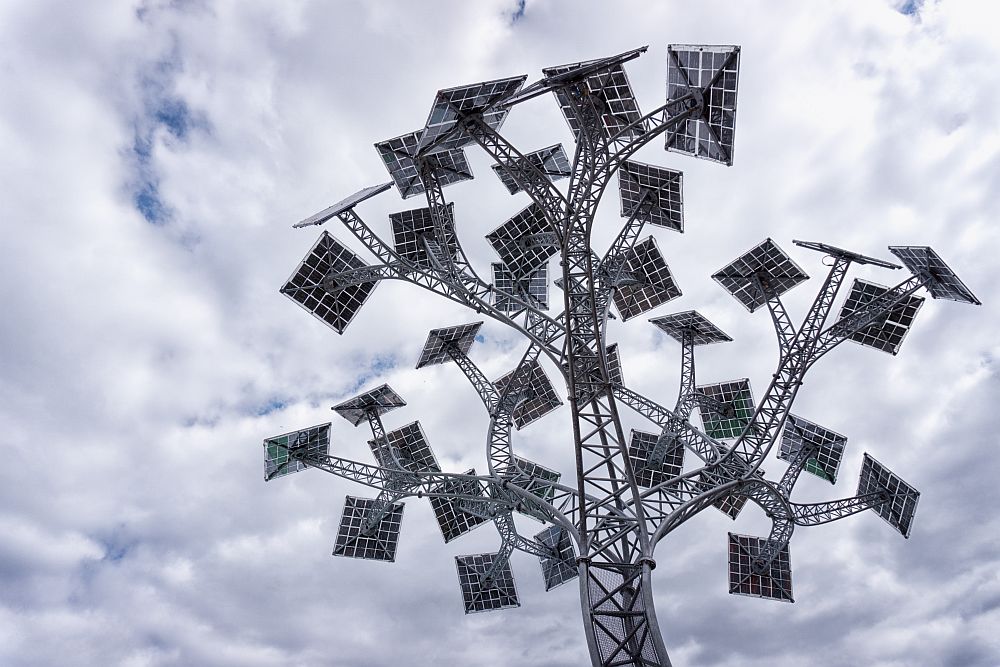
[Image above] Credit: Alexander G; Flickr CC BY-SA 2.0
Coal became a political hot-button issue during the 2016 election—when one candidate wanted to put the entire coal industry out of business, and the other wanted to save the industry.
But coal’s decline, especially the loss of jobs, has less to do with politicians and more to do with advances in the industry, such as automation, and falling global demand.
The U. S. Energy Information Administration’s (EIA) latest report on the global energy outlook indicates that demand for coal has been flat since 2015, and that it is expected to stay that way through 2040. Even though fossil fuels will still account for a little more than three-fourths (77%) of energy use in 2040, non-fossil fuels, such as renewable energy sources, will grow at a faster rate than fossil fuels, according to the report.
So if we’re eventually going to phase out coal as a fuel source, what do we do with all that coal still in the ground? The EIA estimates there are approximately 255 billion short tons of recoverable coal reserves in the U.S. Globally, there are about 1,237 billion short tons of the stuff.
Before we write off coal, we would do well to look at the material in new and different applications. Scientists have already been exploring alternative uses for coal—like furniture, carbon filters, and silicon metal, for example. And researchers have successfully synthesized graphene quantum dots from coal for a variety of applications, including photovoltaics, optoelectronics, and biomedicines.
Perhaps one of science’s biggest achievements in developing advanced materials from coal is the Oak Ridge National Laboratory’s (ORNL) collaboration with the U.S. Navy in building a prototype of a submarine hull made of carbon fibers using a 3-D printer.
Alternative uses for coal
Edgar Lara-Curzio, leader of the Mechanical Properties & Mechanics Group in the Materials Science & Technology Division at ORNL, is one scientist on a mission to explore other uses for coal. “Coal for power generation is going to continue to decrease,” he explains in a Bloomberg News article. “Here is a chance for us to pay back all these coal communities that have sacrificed for so many years to give us cheap electricity.”
Lara-Curzio says coal can be a precursor for high value-added products. For example, carbon fibers have already been commercialized and used in aerospace technologies. Carbon fiber composites are beginning to be used in high volume in the automotive industry. Other potential for carbon fiber composites include sporting goods, electronic devices, and wind energies, he explains in a phone interview.
“Carbon fibers will be the biggest market,” he adds. “We expect to see a measure of growth in that area.” Lara-Curzio notes that carbon fibers are still quite costly, but ORNL is working to reduce that cost. The lab’s Department of Energy-funded Carbon Fiber Technology Facility enables public and private partnerships to work together to scale emerging carbon fiber technology.
Coal can also be used to develop photovoltaics, Li-ion battery electrodes, thermal insulation, and construction materials, such as asphalt and shingles.
“We’re very excited because coal is a complex material,” Lara-Curzio explains. He says that several groups in academia and national labs are developing genomic characterization of coal in order to determine best uses for different types of coal.
But Lara-Curzio envisions an even bigger picture for coal’s use in high value-added products.
“There are economic and social components to refining coal for the manufacture of high value-added products,” he says. “We are not going to burn coal at the rate we did 20–30 years ago. If we can attract investment to establish refineries in depressed communities, we can bring manufacturing facilities to those communities to make carbon fibers and other products.”
In fact, his goal is to turn every ounce of coal into some type of useful product. “Every molecule we get out of the mine finds its way into an application,” he points out.
Lara-Curzio also proposes a retraining of workforces in those same coal communities that experienced the loss of coal mining jobs. “It’s bringing good science and good tech to implement those ideas around communities,” he adds. “This will be a game changer.”
Did you find this article interesting? Subscribe to the Ceramic Tech Today newsletter to continue to read more articles about the latest news in the ceramic and glass industry! Visit this link to get started.
Author
Faye Oney
CTT Categories
- Basic Science
- Energy
- Environment
- Manufacturing
- Market Insights
- Material Innovations

